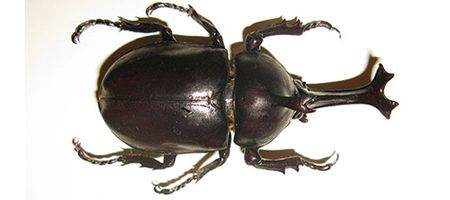Scientists are using electrodes to control a living rhinoceros beetle in an effort to improve the aerodynamic performance of aircraft.

Drexel University engineers aim to study the movements of the Allomyrina dichotoma beetle’s wing by controlling its motion remotely via four tiny electrodes implanted in its body. Electrical currents direct the extension, contraction, direction and flapping frequency of the wings.
The team then films the flight of the beetle from take-off to landing, using a wind tunnel to see how air currents move around the wings they flap during flight.
“A quantitative investigation of aerodynamics and wing kinematics in beetle flight will shed new light on the evolution of flapping flight in nature,” says Dr. MinJun Kim.
“Furthermore, experimental study of the aerodynamic performance of beetles in forward/hovering flight will provide insight into designs for efficient and stable flapping-wing micro aerial vehicles.”
The team says the rhinoceros beetle is perfect for this purpose. Its size – seven to nine centimeters – is large enough to allow engineers to implant electrodes, in both optic lobes, the central nervous system and abdomen, without harming it. It’s also a powerful flying creature for its size, able to take flight directly from the ground – rare among smaller insects.
“Use of biologically-inspired approaches in the aerospace engineering community, motivated by an interest in micro aerial vehicles, has been increasing rapidly,” says Kim.
“Although microfabrication techniques are advancing, it remains a challenge to fabricate separate individual machinery parts and develop millimeter-scale battery systems for aerodynamic maneuverability. An alternative approach is to directly utilize the insect itself. They are easily ‘manufactured,’ and – by nature – self-contained and easy to fuel.”






